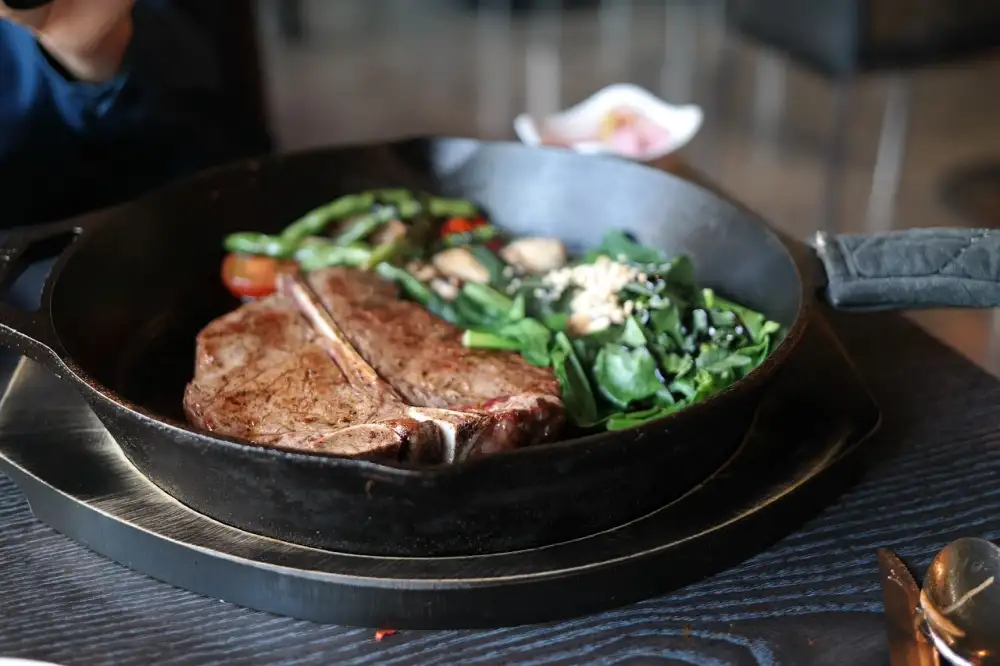Master the Art of Cleaning Your Cast Iron Skillet: A Step-by-Step Guide for a Spotless Kitchen Essential

Cleaning a cast iron skillet may seem like a daunting task, but with the right techniques, it can be a breeze. A well-maintained cast iron skillet is not only essential for cooking delicious meals but also adds character to your kitchen. In this step-by-step guide, we will walk you through the process of cleaning your cast iron skillet, ensuring it remains spotless and ready for your next culinary adventure. So, let's dive in and master the art of cleaning this kitchen essential!
Gather necessary supplies for cleaning
To clean your cast iron skillet effectively, it's important to gather the necessary supplies beforehand. Here's a list of items you'll need:
1. Hot water: Make sure you have access to hot water for rinsing and cleaning purposes.
2. Soft sponge or brush: Use a non-abrasive sponge or brush to avoid scratching the surface of the skillet.
3. Mild dish soap: Choose a gentle dish soap that won't strip away the skillet's seasoning.
4. Coarse salt: Coarse salt acts as a natural abrasive and helps remove stubborn food particles without damaging the skillet.
5. Paper towels or clean cloth: These will be used for drying the skillet after cleaning.
6. Cooking oil or shortening: You'll need oil or shortening for seasoning the skillet after it's cleaned.
By having these supplies ready, you'll be well-prepared to tackle any dirt or residue on your cast iron skillet and restore its pristine condition.
Preparing the cast iron skillet for cleaning
Preparing the cast iron skillet for cleaning is an important step to ensure effective and safe cleaning. Start by allowing the skillet to cool completely before handling it. Once cooled, use a paper towel or a clean cloth to wipe away any excess oil or food residue. Avoid using soap or harsh chemicals at this stage, as they can strip away the skillet's seasoning. Instead, focus on removing any loose particles by gently scrubbing with a soft brush or sponge. If there are any stubborn bits stuck to the surface, you can use a plastic scraper or spatula to loosen them without damaging the skillet's seasoning.
Cleaning the cast iron skillet using gentle methods
Cleaning the cast iron skillet using gentle methods is essential to preserve its seasoning and prevent damage. Start by rinsing the skillet with warm water, avoiding harsh soaps that can strip away the seasoning. Use a soft sponge or brush to gently scrub away any food particles. For stubborn residue, create a paste of coarse salt and water and scrub it onto the surface. Rinse thoroughly and dry immediately to prevent rusting. Avoid using metal utensils or abrasive cleaners that can scratch the skillet's surface.
Removing stubborn stains or residue from the skillet
Removing stubborn stains or residue from the skillet can be a bit challenging, but with the right techniques, you can restore your cast iron skillet to its former glory. Start by scrubbing the skillet with a stiff brush and hot water. If that doesn't do the trick, create a paste using equal parts baking soda and water. Apply the paste to the stained areas and let it sit for a few minutes before scrubbing again. For tough stains, try using kosher salt as an abrasive. Remember to never use soap or harsh chemicals on your cast iron skillet as it can strip away its seasoning.
Drying and seasoning the cast iron skillet
After cleaning your cast iron skillet, it's important to dry it thoroughly to prevent rust. Start by using a clean towel or paper towels to remove any excess moisture. Then, place the skillet on a stovetop burner set to low heat for a few minutes to evaporate any remaining moisture. Once the skillet is completely dry, it's time to season it. Seasoning helps create a non-stick surface and adds flavor to your food. Apply a thin layer of cooking oil or melted shortening all over the skillet, including the handle and exterior. Use a paper towel to spread the oil evenly and remove any excess. Place the skillet upside down in an oven preheated to 350°F (175°C) and let it bake for about an hour. This process allows the oil to polymerize and form a protective coating on the skillet's surface. After an hour, turn off the oven and let the skillet cool inside before removing it. Your cast iron skillet is now ready for use! Remember to repeat this seasoning process regularly to maintain its non-stick properties and prevent rusting.
Storing the cast iron skillet properly
Storing the cast iron skillet properly is crucial to maintain its quality and prevent rusting. After cleaning and drying the skillet thoroughly, it's important to store it in a dry place to avoid moisture buildup. To further protect it from humidity, you can lightly coat the skillet with a thin layer of vegetable oil or shortening before storing. This will help create a barrier against moisture and keep your skillet in optimal condition for future use. Additionally, consider placing a paper towel or cloth between stacked skillets to prevent any potential scratching or damage. By following these storage tips, you can ensure that your cast iron skillet remains in excellent shape for many years to come.
In conclusion, mastering the art of cleaning your cast iron skillet is essential for maintaining its longevity and ensuring delicious meals every time. Remember these final tips to keep your skillet spotless:
1. Avoid using harsh detergents or abrasive scrubbers that can strip away the seasoning.
2. Always dry your skillet thoroughly after cleaning to prevent rusting.
3. Regularly season your skillet with a thin layer of oil to maintain its non-stick surface.
4. Store your cast iron skillet in a dry place, away from moisture and humidity.
By following these simple steps, you can enjoy the benefits of a clean and well-maintained cast iron skillet for years to come. Happy cooking!
Published: 28. 12. 2023
Category: Home



